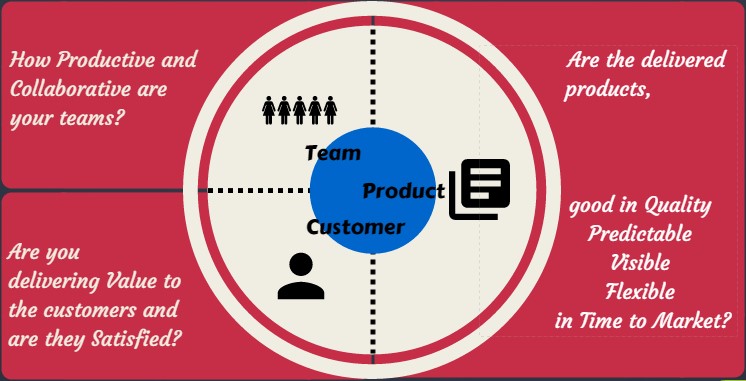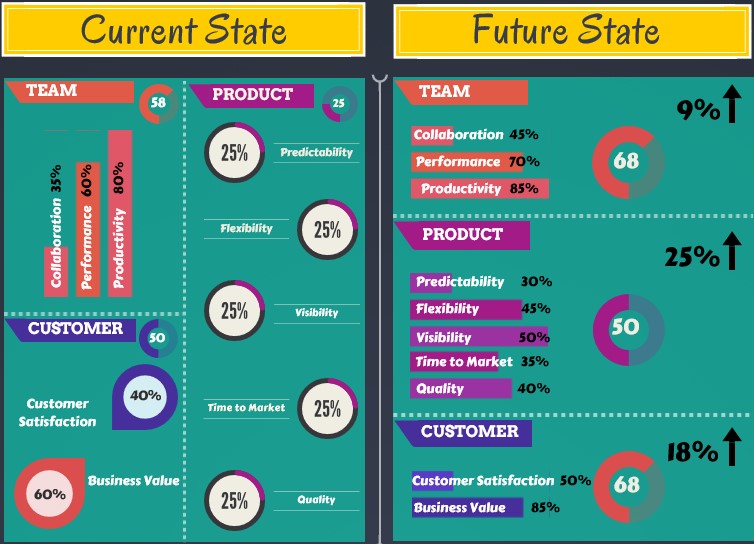Requirements Quality – Methodology Agnostic
Are the current IT systems meet the requirements of Business users or deliver the services that will bring competitive advantage to the organizations?
IT projects continuing to cost overrun, time overrun or doesn’t meet requirements. Poor communication – particularly between business and technical experts – is a constant problem. – As per Financial Times
“Incomplete or Unclear Requirements” and “User involvement” are the major factors for Project failures or project impairment. – Chaos-report by Standish group
These clearly show that one of the major factors for project failures is related to requirements and which made organizations to adopt “Requirements Engineering Practices”.
Let us look at the below few findings from recent report based on combined study by NelsonHall and Maveric Systems.
35% of the IT budget is wasted due to rework caused by poor definition and management of business requirements from IT
23% of the projects are either deferred or not implemented due to poor definition of requirements
Banks spend 5% of their overall IT budget and less than 10% of overall time on requirements assurance
These results raise questions about the effectiveness and maturity of requirements engineering practices adopted and practiced. Requirements being important factor for project success, organizations started measuring and improving the requirements engineering processes. Requirements Maturity Model (RMM) by IAG Consulting, Requirements Management Maturity by IBM which are in lines of CMMI are few models to measure or assess organizations state of requirements development and management and improve to the next level of maturity.
Does it apply for organizations those adopting agile principles for software development? One of the values of Agile says “Changing Requirements vs. Working as per plan” and one of the principles of Agile says “Welcome changing requirements”. Agile environment welcomes requirement changes when compared to waterfall model where the requirements need to be signed off before passed to next phase and post which no changes to requirements are encouraged. Changing requirements does not mean that the quality of the requirements can be compromised.
Scrum is one of the most popular agile methodologies used. Scrum is a methodology where product is delivered in Sprints and each sprint is a mini waterfall model with a bit of all the phases of waterfall model with in. Product Backlog Items (PBI) in scrum is similar to requirements in waterfall and Product Backlog is like Requirements document. Product Backlog Grooming and refinement are similar to Requirements Engineering in waterfall model where this is done for whole project or product where as in Scrum this is done sprint on sprint basis. Groomed Product Backlog is key to sprints or incremental software delivered. Delayed or idle sprints, frequent redesigns to product increments, Unable to deliver value, Stories being rolled over to next sprint, and etc. are few consequences of improperly groomed product backlog. Product Backlog Grooming is one of the major activities in scrum development cycle for product or project success. The requirements dependency map
Irrespective of models or methodologies being adopted for software development, quality of requirements remains to be one of the key factors for project success. Knowing this, how do organizations know what aspects of requirements in agile can be improved for overall project or product success? Are there any models available to assess the agile maturity of organizations and provide requirements related improvements to improve the overall agile maturity?
“RDM Agility” is a model for assessment based on following factors to check the overall maturity that can help in moving to the next stages of maturity. Assessment details on the current agile maturity state of organization and also details about what state of future agility can they achieve by making improvements to requirements related aspects of agile methodology. Assessment is grouped under 3 categories Team, Product and Customer. Each category has few parameters which are considered for evaluation.

| Category |
Parameter |
Evaluation |
| Team |
Productivity |
How productive are your Agile Teams?
|
| Performance |
How are Agile teams performing? |
| Collaboration |
How collaborative are your Agile Teams? |
| Product |
Predictability |
How predictable are your products delivered? |
| Flexibility |
How flexible are the products/software delivered? |
| Visibility |
Are the customers visible of the products being delivered? |
| Time to Market |
How soon are your products available for users to use? |
| Quality |
How good are the products delivered? |
| Customer |
Customer Satisfaction |
How much are the customers satisfied? |
| Business Value |
Are the right products delivered? |
A typical result [*] of the assessment snapshot is given below details on current state of organizations agility and future state of agility grouped under 3 categories.


Assessment result also lists top 5 target opportunities for improvements.

Author: Sesha Rao Vundavalli, Consultant, Maveric Systems

Sesha Rao Vundavalli is a Consultant working with Requirements Assurance Practice at Maveric Systems. He is a graduate with bachelors in engineering. He has been working in the IT industry for over 10 years in the technology and consulting space. His primary area of interest in the requirements and consulting in the software space.
About Maveric Systems
Started in 2000, Maveric Systems is a leading provider of IT Lifecycle Assurance with expertise across requirements to release. With a strong focus on the BFSI and Telecom sectors Maveric has built a business on the principles of deep domain expertise and innovation. Maveric’s client portfolio includes a wide array of renowned banks, financial institutions, insurance companies, leading software product companies and telecom companies.
Headquartered in Chennai, the company has offices in Mumbai, Bangalore, Dubai, Riyadh, London, New Jersey, Singapore and Kuala Lumpur. Maveric has a dedicated global offshore delivery centre and a Testing R&D lab in Chennai.
Write to us at [email protected]
Visit us at www.maveric-systems.com
References/Footnotes:
- Infographics are based on a conceptual model and not an actual assessment.